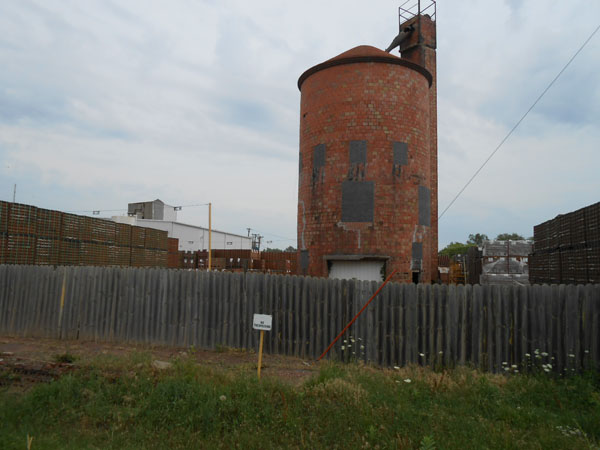
Chapter 2: Barton Clements
It's 1849, the same year gold was discovered in California. The Clements family decided to go West. Pa had been working in the limestone mines in Monroe County, Indiana and wanted a change. The official plan was to go to Iowa,
if decent farm ground could be found.
Unbeknownst to ma, Barton's pa had it in his mind to keeping going west to California to hunt for gold. He thought if he could mine limestone, he could surely mine for gold.
The family arrived in the Adel area of Dallas County and looked around. (Dallas County was named after Vice President George M. Dallas). Pa then mentioned the option of continuing west to California.
“Ya know Mary,” Pa said. “Look at the people already here that are going west.
It might be a good idea to go along with them to see what comes of it.”
Indeed, Dallas County lost several settlers, even some elected officials to the gold rush out West.
But Ma made it clear that she was tired of traveling with a passel of kids, and didn’t want to travel another three months to get out West.
She said, “I have no desire to try to feed four kids while you’re trying to find tiny bits of yellow metal hiding in creek-bottom sand.
I’m not a bit partial to the idea. Nossir!
While we know how much limestone is in Monroe County, we don’t know how much gold is in California.”
Some men left their families and went West in spite of what their wives said, but Pa listened.
So, they bought a piece of ground south and west of the trading post in Adel from such a gold-seeker,
and they 'put to farming'. (Sometimes, I talk the way they did back then.)
As the youngest of three sons, Barton, grew into a young man. He worked the farm and would also go to town and get work as he could. Barton was a young man when the Civil War began. He joined up with the 39th Infantry, formed in Des Moines in the fall of 1862.
After the war, he settled back in Adel, but by that time his family had sold their farm and bought another farm north of Adel. It seems that the place just south and west of town was so full of clay, “It was good for nothin’ but makin’ bricks”, his pa used to say. And…as it turned out, that’s how it turned out. Even today, on that very piece of ground, stands a brick factory, sputtin’ out bricks that become buildings and streets.
The photo shows part of the brick factory in Adel.
Barton came back from the war, battle-damaged, with ‘soldier’s heart’, as one Civil War doctor called it. He no longer liked handling horses in harness; though he spent many hours as a boy handling a team with a cultivator or a wagon. Early in 1865, the Iowa 39th infantry was attached to General Sherman’s army, and engaged in the Campaign of the Carolinas in North Carolina.
In one battle, Barton got tangled up with a team of horses pulling a supply wagon. The horses spooked and came through the battle line, right where Barton was posted.
Barton wound up in the harness reins that the horses were wearing.
Perhaps the scariest part was, while he was tangled up, he saw a Confederate soldier aiming his rifle at him. He probably thought it would be an easy shot. Suddenly, another soldier standing next to the Confederate soldier pushed the rifle upward, spoiling the shot. Barton could see the shooter yelling at the soldier that pushed his gun away.
Barton could see him answer back, the battle lines were that close.
I guess the second Confederate soldier thought it was unfair to shoot a man when he was all tangled up.
Barton was grateful and got as good a look at the second soldier as he could as he wrestled with the horses.
Another Union soldier ran up and helped him get free. They reached cover and Barton collapsed.
“Are you alright, friend?” the man asked him?
“I will be, soon as I can breathe.” Barton gasped. “That Rebel over there did me some good.”
Barton moved slow for a few days, and it wasn’t but a few weeks until the war was over. Even so, that day birthed many a story and many a yarn by his fellow soldiers in the years that followed. Men in his regiment talked about ‘Barton’s Dance with the Horses’ for decades. Barton hated to be reminded of it, though he thought about it often.
But Barton no longer trusted horses. Since he wouldn’t trust a horse anymore, he wasn’t much good on the farm.
(no tractors yet). And his parents' farm scarcely fed his parents and two older brothers.
If he were living today, they would probably say that Barton had PTSD. He wandered into town to make a living,
and built a little shack on the east side of the North Raccoon River in old Adel. He had just a short walk to town,
where he did manual labor jobs, helping carpenters and bricklayers.
During the winter, he cut wood for neighbors to keep food in the larder in his cabin there on the river.
But every fall, Bart would disappear for a few weeks at a time and come back for Thanksgiving. His relatives never knew exactly where he went. He would save his money, and then go to Des Moines, where he would connect with a train going somewhere else, somewhere he would never talk about..
Not even his mama could get the details out of him while she was alive, and he loved her more than anyone in the world.
Let’s go back and see what Sophie and Parker are up to…
Eric J. Rose
middlegrademysteries.com
http://ralphsbike.blogspot.com/2013/07/central-iowa-400k.html